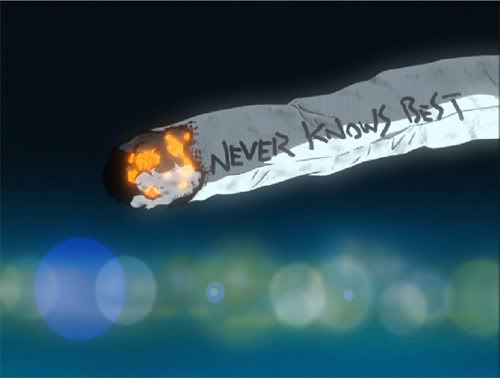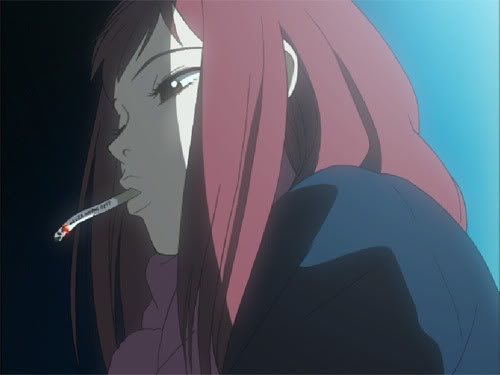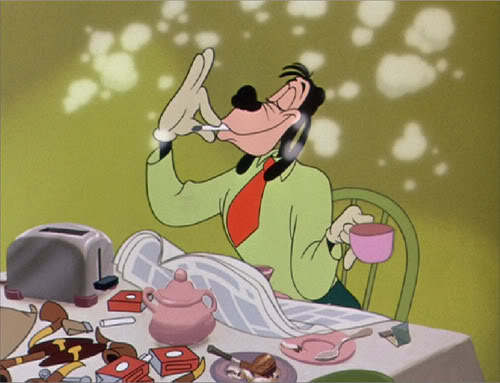Were one to construct a Sarris-on-42nd-Street style pantheon of exploitation filmmakers, it would be topped by those who created masterworks that live in museums and are protected by government agencies as national treasures, and laypeople who don't have the Sinister Cinema catalog delivered aren't aware that the movies ever played in proper fleapits and ozoners. So that's Romero, Hooper, Carpenter, Ulmer, Argento, Corman, Meyer. There would be a tier below that for geniusy craftsmen that play by the rules but slip in a lot of intentional art agenda, or deliver more goods than necessary, entertain above and beyond the call of duty, generally make something far more special than the poster art. That's your Fulci, Castle, Bartel, Sarno, Jack Hill, Larry Cohen, Rollin, Corbucci. These directors don't so much transcend the ghetto as create its definitive touchstones, exemplary examples. Then there might be Fascinating Weirdoes, and there most of us would list Milligan, Esper, Wishman, Findlays types. Can't live with 'em, can't believe what you're seeing. The bulk of the rest of the sea of candidates would be those with an identifiable style, thematic preoccupations, stable of collaborators — anything, really, that makes the filmmaker distinguishable from the house style of their producer, studio, or any anonymous journeyman or semi-competent. So: Adamson, Steckler, Mattei, Cimber, Castellari, Mikels, Bert I. Gordon, etc. forever.
Feel free to shuffle/add/remove names around until satisfied/bored/confused. This will surely become a popular party game on the order of bobbing for apples and Seven Minutes in Heaven, and lead to fistfights about what counts as an exploitation film, what nationalities should be included, and where to place Jess Franco. Now in such an imagined framework, certain of filmmakers, producers, and individual works are going to be singled out as Important Innovators. Beyond that acknowledgement the subject may or may not be examined or appreciated any further as film art. No guarantees. This happens in the above-ground world of major studio product as well, so for consideration: The Jazz Singer is something like a household name, and there is not a BFI Film Classics volume about The Jazz Singer.
Point being: Herschell Gordon Lewis.
Occasionally in this scum-glitz twilight realm, one bumps into a filmmaker who self identifies as an artist. They are rare among the carny types, jolly, cynical or both. By the accounts of their intrepid biographers, Andy Milligan and Edward Wood, Jr. are among that small number. Though they may have had few illusions about the nature and reputation of their work, these filmmakers at the bottom of the industry caste system, whatever else they may have been, understood that every picture-maker and story-teller is an artist.
Lewis has sometimes joked that his films are obviously well-made because the camera is always in focus.
Lewis' camera, of course, is not always in focus.

The hell?
Because Lewis and frequent producing partner David F. Friedman are world class showbiz raconteurs, and their landmark string of gore movies so pioneering, the films themselves are always overshadowed by their taboo-breaking legacy. The ten horror films account for less than one third of Lewis’ output (37 features), even when taking lost films into account (four known titles, supposedly upwards of dozens of shorts, loops and features). Among his horror pictures, approximately half of the very goriest titles dominate discussion of Lewis’ work. Which leaves us with an intriguing question: what is going on in the rest of Herschell Gordon Lewis’ movies?
The bulk of Lewis films are nudie cuties, a genre at which Friedman excelled. The balance of the filmography is filled out with hillbilly comedies, a biker movie, juvenile delinquent pictures, and oddball children's movies. All of these possess potential peculiar charms, but it is time to go hunting for the authorial stamp that marks them as H.G. Lewis films after the credits have vanished from the screen. Thankfully, all of Lewis' surviving work is available on home video, making it possible to evaluate his filmography beyond outstanding innovations in pulling out women's tongues.
Let’s take it from the top. Herschell Gordon Lewis' film career begins in 1959 with
The Prime Time.
"Some kids grow up real slow. Me, I explode!"
Not content to hang around with her peers at Luigi's Italian Stereotype Restaurant, wild child Jean (Jo Ann LeCompte) screams at her mother, kisses Daddy goodbye and heads out into the day-for-night with clean-cut neighbor boy Tony (James Brooks). "Seventeen! I look at least twenty-two and I feel thirty!," kvetches the girl, burning with whattaya-got? rebellion (Friedman later quipped unkindly that "she was twenty-nine, and, on screen, looked forty-nine." To be fair, she's quite pretty and looks twenty-nine). The hot to trot gal is just toying with Tony's emotions for access to his wheels, and demands to borrow his convertible.
Meanwhile, Jean's nasty cop boyfriend Mack McKeen (Frank Roche) and his partner harass a pint-sized beatnik painter/ sex pervert known as "The Beard" (Ray Gronwold), who has been accused of molesting his underage models. Before leaving to make time with his own jailbait love interest, Mack extorts use of The Beard's studio as convenient location for his own romantic rendezvous. Alas, 'tis a date not to be kept. The Beard shows up to inform Jean that Mack has been called away on Police Business. Jean berates the hepcat's manhood, then commands that he paint her in the nude.
Poor Tony is bummed out about Jean's bad behavior, and mopes around Luigi's while his wacky pals spray bottles of Coke on each other. Even a late night underwear swimming party at the quarry can't cheer up Tony. His lovesick good girl friend Gloria tries to console him, but the situation worsens when Jean doesn't show up to return the car. Back at Chez Beard, the artist has gone berserk, tied up Jean, and painted her in a non-explicit pose unrelated to the way she's sitting. The wheels in motion,
The Prime Time becomes a three-ring kidnapping drama as Tony and friends play teen detectives, Mack tries to throw the kids off the scent, and The Beard torments the captive Jean.
Two relationship triangles fuel the plot. The first is the questing knight/detective Tony torn between potential girlfriends, as light woman Gloria assists him in locating dark woman Jean. The second is free-spirit Jean turned object of desire and caught in the machinations of corrupt cop Mack and the crazed Beard. These figures of the Establishment and Counterculture respectively are both rotten abusers acting on self-interest, and it is great fun to watch the two creeps bicker.
The Prime of Jean: Sin, Suffer, Never Repent
Furious at the world, impatient at all times, and perpetually spitting venom, Jean is introduced posing in front of a mirror during the opening titles, and plays her first scene before another mirror. Jean is only interested in Jean, cannot see past herself, and sees others only in terms of what they can do for her or as objects of ridicule. Restless and dissatisfied, the self-absorbed girl desires constant movement and stimulation and nothing can scratch that unscratchable itch. Jean's quintessential scene may be as she waits for Mack at The Beard's studio, killing time by pacing incessantly, smoking and fuming. When she learns that her beau cannot keep the date, she is not upset because she cares about Mack, only indignant that she could be stood up, and in favor of the police chief no less! Doesn't the police force know who they're dealing with?
Sadly, the film's most compelling character is waylaid early in the story. Though we're stuck with the hopelessly square Tony for the second half, there are fun interludes with the sweaty Beard and his bitchy captive, and the trail to Jean is peppered with colorful exploitation elements. Tony's wiseass buddy Shorty beats up the owner of The Golden Goose bar where The Beard does live painting. A jumpin' rock combo plays "Teenage Tiger" (lyrics by Lewis, performed by "The Dodos"). A disreputable lady photographer tells an anecdote in flashback, in which Jean meets Mack during a dress-ripping, hair-pulling catfight. Finally, The Beard slips Jean a mickey and is about to stage her suicide and skip town, but blows himself up in a freak accident, slipping on a dropped match in his gas-filled apartment.
Beyond the rock n' roll, beatnik angle and semi-skinny dipping this is all fairly standard JD picture stuff (disregard any of several sources claiming it is any sort of nudie picture, cute or rough), but
The Prime Time puts a plot development, trashy idea or weird, entertaining touch in every scene, and thus moves at a zippy pace. It may or may not be implied that The Beard sexually assaults Jean, and the film is a little more sexually charged than its contemporary cousins, but nowhere near as outrageous and seedy as Ed Wood, Jr.'s porn racket exposé
The Sinister Urge of the following year, or crazy as his girl gang saga,
The Violent Years (1956). Whether their morals are faux or no, wherever the finger is ultimately pointed, JD pictures are about the dangers facing a generation desperate to grow up too fast, but woefully ill-equipped to deal with their wild-for-kicks impulses. Some sophisticated entries in the cycle make social tragedies of this theme, as in
Rebel Without a Cause and
The Blackboard Jungle (both 1955), some, like the above examples from Wood, just gawk in fascination.
The Prime Time is of the Wayward Girl subgenus, that is, it particularly focuses on the perils of adolescent female sexuality. Prurient and moralizing as it is, the film does not quite depict outgoing female sexuality as a destructive sin in and of itself, does not name VD, unwanted pregnancy, or ruined reputation as pitfalls, nor imply threat sexual activity is a gateway to drugs or violent crime. The danger in
The Prime Time is that Jean's wonton behavior makes her bait for a society of wolves, and she is beset by controlling men who would possess and destroy her, and squares who would rescue, cleanse and change her. Jean cannot win, for the world cannot abide her as she is, nor she abide the world, and her ending has the fated feel of Lulu and Jack the Ripper's date with destiny at the end of
Pandora's Box. Though Friedman recalls the movie having an "up-beat ending," it does not.
Cop vs. Beatnik: The Eternal Struggle
Directorial duties on
The Prime Time were handled by Gordon Weisenborn, though the Internet Movie Database and various print sources erroneously credit Lewis as directing "as Gordon Weisenborn" (Lewis himself makes no such claim). Lewis would adopt transparent pseudonyms on future productions and coincidentally has a "Gordon" in common with the director, so it is unsurprising that direction is frequently ascribed to Lewis. The principle account of the making of
The Prime Time is in David Friedman's autobiography
A Youth in Babylon, which contains at least a few minor gaffes, but certainly establishes that Weisenborn was a real person. Conceding that Weisenborn was "a competent craftsman and a nice enough guy," Friedman pokes fun at Weisenborn's artistic ambition — "he thought he was making a film of great social significance" —, and rhetorically ponders why Lewis recruited Weisenborn instead of directing the picture himself. Friedman does offer the lead that Weisenborn's resumé consisted of work created under the Film Board of Canada.
The National Film Board of Canada website lists two Weisenborn shorts in its archive:
"When Asia Speaks" (1944, 19 m.) and
"Tomorrow's Citizens" (1947, 11 m.), the first of which may be ordered on DVD.
The Academic Film Archive of North America website indicates that in the early 1950s Weisenborn worked frequently with Academy Award nominee
John Barnes on projects like
"Safety on the Playground", a railroad safety documentary called
"Impact" and story films to accompany Dick and Jane reading primers. According to his AFANC autobio, Barnes was from Chicago, though he spent periods living and working in London, Rome and elsewhere. As Lewis was based in Chicago and
The Prime Time was eventually shot in the area, it seems likely that Weisenborn had relocated to Illinois sometime after the war. The most intriguing Weisenborn/Barnes collaboration,
"People Along the Mississippi" (1952, 21:39 m), is an educational short made for Encyclopedia Britannica films, and is readily viewable at
Archive.org. A sweet and historically interesting parable of racial integration in America,
"Mississippi" is more poetic and stylish than the average '50s classroom film. Weisenborn is named as a Chicago filmmaker by the
Chicago Film Archives, which houses ten of his prints and an interneg (titles not listed online).
It is likely that Lewis had a strong hand in creative decisions, and Friedman owns up to having shot some pickups of the quarry swimming scene, which are frankly the worst looking, sloppiest section of the film. Comparison between the filmmakers is inevitable, but both Weisenborn and Lewis have their strengths.
This is thorny territory normally bypassed in this journal. Lewis has given enough talks and interviews to establish his preferred position on the topic of his artistry. Plainly, he presents himself as a savvy businessman, sometimes as a jovial, witty huckster, and no more; the stance being that he provides product of ample running time and audiences are sufficiently entertained so as not to request refunds. Point certainly taken, and the rough edges and semi-competence are thus chalked up to indifference and irrelevance. But that lack of attention to technique accumulates into a recognizable, peculiar style, integral to Lewis' appeal, and that is the partial cause and purpose of this exercise.
The Girl, the Bottle, and the Phone
Based on
The Prime Time and his available short subjects, Weisenborn has a better grasp of traditional cinematic basics than evinced by his producers in their own directorial work, or at least more interest in and dedication to classic form. He has a strong compositional sense, frames shots and moves the camera to accommodate movement with greater accuracy.
The Prime Time is not exactly dripping with style, but Weisenborn sometimes stages action on multiple planes and foregrounds important props a few times. As Jean contemplates answering a ringing phone, it looms in the fore, as do a pair of carnival prize wicker monkeys in her bedroom as Tony reminisces about the missing girl. There is not enough available work to determine what constitutes the Weisenbornian touch, but the tone throughout has a intensity of conviction that Lewis' work does not. That may not be to
The Prime Time's benefit as memorable entertainment, but it makes it less weird than many pictures on its family tree.
The Beard: Adam Sorg, Take One
Weisenborn may be a more technically competent director than Lewis — even after thirty feature films — but the fingerprints of the producers are all over
The Prime Time anyway. Like John Carpenter, Clint Eastwood, and Charlie Chaplin, Lewis sometimes scores his own work, and here he provides lyrics for the two slightly alien musical numbers. The plot only produces a pair of corpses, but they are created by an elaborate, unusual accident and murder, then posed in interesting tableau. The Beard is the first in Lewis' lineage of obsessed, murderous artists, which will carry through Adam Sorg of
Color Me Blood Red (1965) and climax with the unforgettable Montag the Magnificent,
The Wizard of Gore (1970). Delinquent behavior, the rock n' roll scene, sexually active teen girls, and the men who would exploit them are topics that Lewis would revisit in various combinations in
Scum of the Earth (1963),
Sin, Suffer and Repent (1965),
The Girl, the Body, and the Pill (1967),
Blast-Off Girls (1967),
She-Devils on Wheels (1968),
Alley Tramp (1968), and
Just for the Hell of It (1968).
With all its historic firsts,
The Prime Time has another claim to fame as Karen Black's screen debut. Indeed, in the finished product, the future
Trilogy of Terror star can be glimpsed dancing at Luigi's and posing for The Beard at The Golden Goose. Friedman relates an anecdote that midway through shooting Black signed a manager and the company was paid $2,500 to destroy the nude footage of her appearance in the swimming scene. A far-fetched tale, perhaps, but the point is clear: Lewis and Friedman found a way to make money off their picture before it was even completed.



























